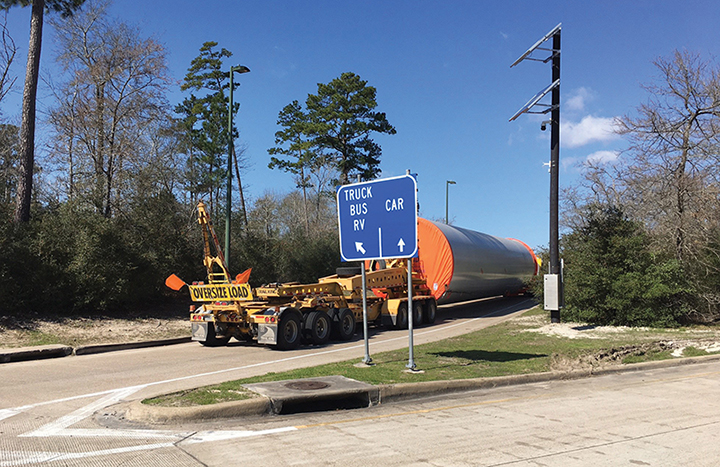Finding safe parking is a constant concern for the nation’s hundreds of thousands of truck drivers. There are typically not enough parking spaces along their routes, and there is no real way for truckers to know in advance about parking availability.
How big is the issue in Texas? According to the Texas Department of Transportation’s (TxDOT’s) Statewide Truck Parking Study completed last year, 140,000 trucks need to park each day in the state. Without more designated parking areas — or ways of letting truckers know where and how many parking spaces are available — the problem will likely get worse as freight needs grow along with Texas’s population.
“The lack of truck parking availability — where drivers need it — results in unauthorized parking on highway shoulders, ramps and frontage roads,” says Sherry Pifer, freight systems branch manager in TxDOT’s Freight Trade and Connectivity Section of the Transportation Planning and Programming Division. “Truck parking shortages impact the safety of drivers and the traveling public throughout Texas, and TxDOT is committed to making Texas highways the safest in the country.”

Texas A&M Transportation Institute (TTI) researchers have been working with TxDOT on various aspects of this problem since 2015. Truck parking information systems activity is part of TxDOT Project 0-6837, Assessment of Innovative and Automated Freight Systems and Development of Evaluation Tools. After identifying many potential freight-related strategies and technologies that could improve freight mobility in the state, in Phase III of the ongoing project, researchers will test numerous intelligent-transportation-system-based technologies that could facilitate the timely flow of commercial freight through Texas. (See the sidebar to this story for more project activities.)
“We are evaluating two types of sensor technologies to help count and communicate available truck parking spaces,” says Curtis Morgan, lead on the project and manager of TTI’s Multimodal Freight Program. “Because it’s such a pervasive problem, the ultimate goal is to give truckers advanced and accurate notice of available parking spaces.”
The TTI research team is evaluating a scanning LED sensor from LeddarTech, which is a LiDAR-based detection system. The entry/exit system was placed at the entrance and exit of the parking lots to count and keep track of both arriving and departing vehicles.
“These two technologies can help determine the reliable number of available spaces in a particular lot,” says TTI’s Dan Middleton, a leader in vehicle detection research and commercial vehicles issues. His work is taking place in the truck parking lots of the twin TxDOT safety rest areas (SRAs) on I-45 in Walker County, located north of Huntsville.
The team has also contracted with the parking management company IPsens to install in-pavement infrared/magnetic sensors in all the marked truck parking spots in the SRAs. The system detects when a truck covers a sensor and counts that spot as occupied.
“In our preliminary evaluation, both systems seem to be working well, keeping accurate tallies of the number of trucks versus the number of spaces,” Middleton says. As part of the project, changeable message signs were placed before each SRA entrance, letting truckers know real-time parking space availability.
“This was a good first step in determining that counting truck spaces is achievable,” Middleton says. The next step could be the development of a high-tech information system that notifies truckers about space availability, perhaps through TxDOT’s LoneStar system or even through the truck’s onboard electronic logging device system.
“Truck parking information systems will help truck drivers and dispatchers make informed decisions about where to safely and efficiently park along the Texas Highway Freight Network,” Pifer confirms.

